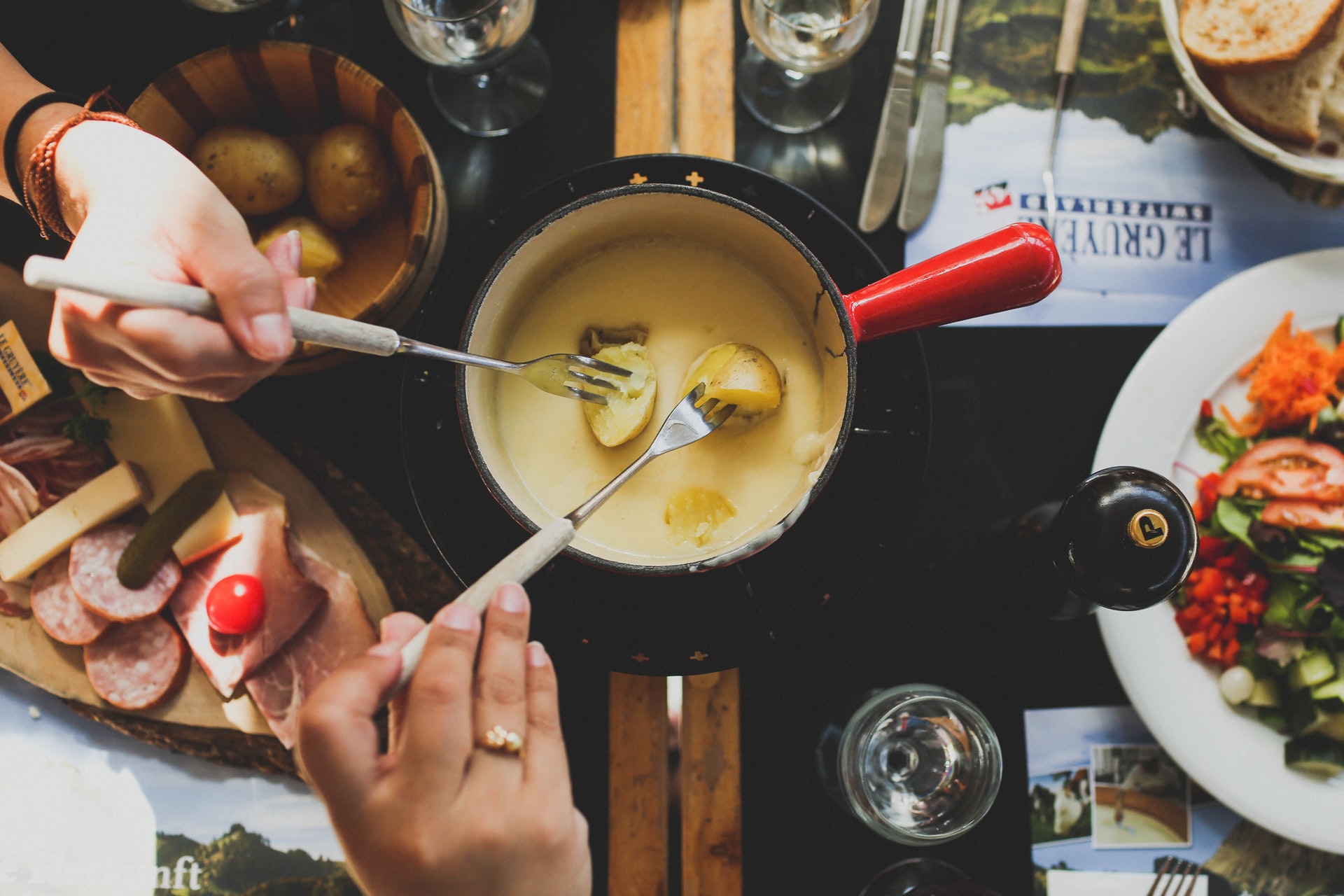The pristine, mountainous country of Switzerland has more to offer visitors than great skiing and wonderful cultural events. A country's culture is heavily reflected in its cuisine, and the picturesque region is home to many wonderful dishes. Italy, Germany, France, Austria, and Liechtenstein border Switzerland, and people from these countries often settled in nearby Switzerland over the years. These settlers brought elements of their culture, language, and cooking with them to Switzerland; these elements eventually became adopted as Swiss just like the people who brought them.
Italian-influenced Swiss cuisine
Italian immigrants introduced the Swiss to a porridge called polenta made of cooked grains, and a version made with corn became a staple dish of the region after hundreds of years. Polenta is often served with locally caught wild game meat, and the dish is particularly popular in the Swiss Canton Ticino where Italian is also the official language spoken.
The rice dish Rissoto is also an Italian contribution to a now Swiss staple food. This savoury creamy dish cooked with onion, butter, and flavourful broths is widely eaten in the southern cantons of Switzerland. The dish comes in many variations, but the most popular one eaten in Switzerland is made with saffron.
Distinctively Italian, Pizzoccheri is a ribbon-like pasta dish paired with vegetables like seasonal greens or potatoes. The pasta is often smothered in a sauce made from cheese, butter, and garlic. Buckwheat and wheat grains are the main ingredients of this rich dish, and the grains are usually gained through imports from neighbouring countries like Italy.
Germany's mark on the Swiss palate
Germany known for cuisines featuring various meats and potatoes has lent Switzerland a love for rosti or potatoes. Rosti similar to hash browns is both a healthy and delicious comfort food. Even though World War II left palpable animosity between the Germans and French, their love of rosti was commonly shared. The dish is widely consumed in the Swiss canton of Bern where the residents bilingually blend French and German.
A sweet dessert casserole with the name Emmental Apple Rosti is quite different from the original potato Rosti. The dish's ingredients include stale bread, cinnamon, sugar, apples, butter, and the ubiquitous Emmental cheese. Emmental Apple Rosti became popular not only because of its German roots, but also because the ingredients were easily obtained locally.
Francophone food inspirations
The French's love of all types of cheese and wine easily made its way across the Swiss borders. Rich dishes like fondue and raclette are common yet infrequently eaten favourites of the Swiss. White wine, garlic, seasonings, corn starch, and of course blended melted cheeses comprise Swiss fondue. Swiss cooks serve the dish in a communal ceramic pot where intimate groups of friends and family dip breads into the cheese mixture for a delightful wintry comfort food treat.
Dessert staples like meringue were also adopted by Swiss bakers and confectioners. The French and Italian both used versions of meringue in their dishes, but the technique for preparing the meringue differed. The Swiss also have a version of meringue preparation that results in an altogether different consistency than either the French or Italian versions.
Although the cuisine of Switzerland is heavily influenced by its neighbours, the Swiss usually adopted dishes that could be made from locally produced items historically. In the past, Switzerland was mainly an agricultural society so the items produced on their local farms most often made it on to their dinner plates. For example, popular Swiss dishes utilize plenty of milk, cheeses, chocolates, and wine. No matter what the dish, Switzerland is definitely far from neutral when it comes to tasty cuisine.


